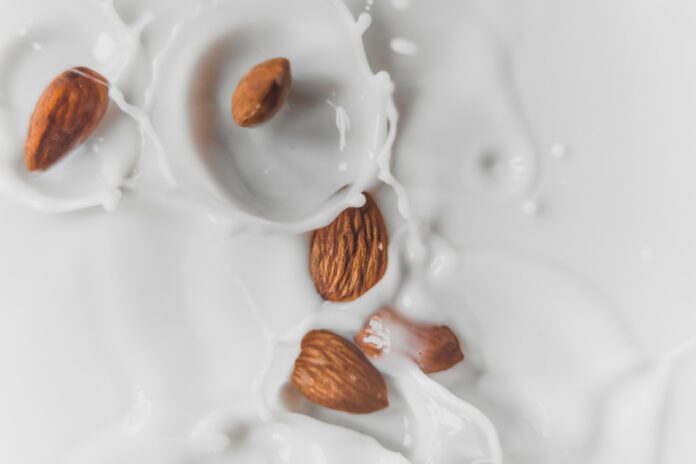We all know cow’s, sheep’s or goat’s milk. But what about rice, oats, cashews or almonds?
Plant milks are increasingly replacing animal milks, whether due to lactose intolerance, vegan or raw diets or organic living.
However, you do not necessarily have to follow any diet to diversify your diet with quality plant milk. Y
ou can handle the recipe at home and moreover – almond milk is full of vitamins and minerals and its sweet nutty taste will pleasantly surprise you. See with us how to make it!
Almond milk does not mean overpriced from a store where you pay for nice packaging and added sugar.
You can easily prepare it at home, you will save and the planet will thank you.
The benefits of homemade almond milk are innumerable.
Home-made milk is prepared without preservatives, stabilizers and added sugar, which is found in most beverages (in some it is even more than almonds!).
At the same time, you can control the proportion of nuts and water, and thus achieve the right taste.
Almonds are a great natural source of vitamin E (26 mg of vitamin per 100 grams of almonds), while boasting a high content of magnesium (270 mg per 100 grams of almonds) and calcium (269 mg per 100 grams of almonds).
And you will surely be pleased that you will pay up to a third less for the raw materials for the production of one liter of honest house milk than for the liter of milk purchased.
For the recipe you will need:
- 1 cup almond Carmel or Raw Valencia
- 4 cups of water + extra water for soaking almonds
- pinch of salt
- linen cloth
- powerful mixer
We recommend Carmel or Valencia almonds for milk preparation.
Carmel American almonds have a sweeter and fuller taste. The almonds are a bit smaller, so they are ideal for use in the kitchen and milk preparation will cost you a little cheaper.
In contrast, Spanish Valencia almonds are raw, so they have retained the maximum amount of nutrients. They also have a harder skin, which is a rich source of vitamin E and fiber.
Whether you choose one or the other, the recipe for the best almond milk is always the same:
We soak the almonds in cold water so that they are all completely submerged.
They should soak for at least 4 hours, but ideally we let them rest overnight in their bath.
Not only will they mix better for us, but the milk will also be creamier and most importantly – we will bring almonds to life!
The next day we pour water from the almonds, put them in a blender together with four cups of fresh cold water and mix them into a porridge.
We can also add a pinch of salt to enhance the sweet taste of nuts.
Then strain the mixture through a cotton cloth or fine gauze and squeeze the finished milk into a bowl. Homemade almond milk will last you 3-4 days in the fridge.
Do not throw away the remnants of the flesh in the cloth! They are full of fiber and you can consume them with a little dexterity.
It depends on the performance of your blender, if you have fine leftovers, do not be afraid to dry them and use almond flour for baking or to prepare raw desserts.
If you have larger pieces left, spread them out on a baking sheet and let them dry until crispy in the oven at 60-80 ° C.
Then you can add them to yogurt, oatmeal or as a decoration for cakes and desserts. They also taste great in homemade granola!
Almond milk in five points:
- It has a pleasant nutty taste, cream color and creamy texture similar to cow’s milk.
- It will cost you cheaper than buying and at the same time it will be much better.
- It is not as caloric as cow’s or soy, but it also contains less protein.
- Homemade almond milk lasts 3-4 days in the fridge.
- You can use the rest of the almonds in raw desserts, yogurt or porridge.
If you would like to sweeten your life, we recommend adding (rather than sugar) agave or maple syrup to almond milk, or mixing one or two dates with almonds.
You can spice the drink with vanilla, cinnamon or exotic cardamom.







